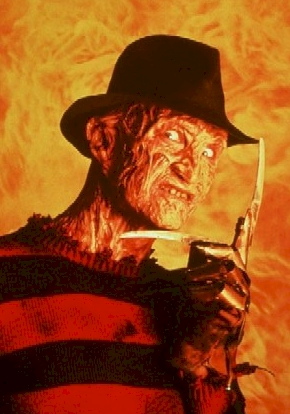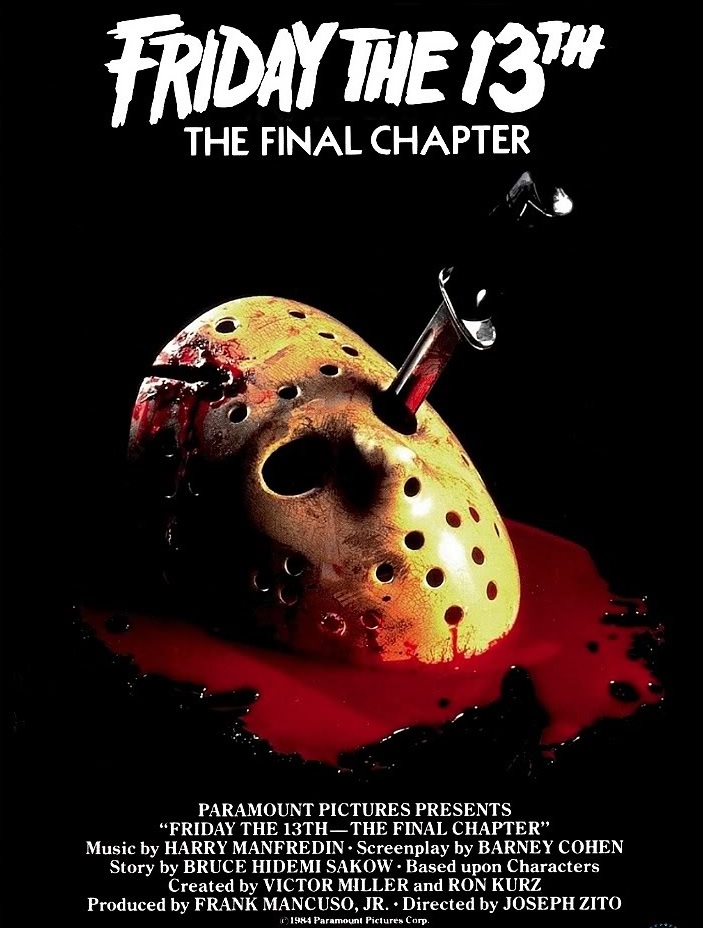The year we currently find ourselves in is of course 2014, which means that 30 years have passed since the calendar read 1984. That is, if I’m doing the math correctly. I never was very good with numbers…
1984 was one of the greatest years in the history of the horror genre, giving birth to a host of brand new icons, and continuing the box office dominance of the leading villain from the 80s slasher boom.
On the 30th anniversary of a true banner year for the genre, we look back on the films that made it such a terrific time to be a horror fan, in this Halloween Love mini-retrospective!
We begin our journey in April of 1984, and the release of Friday the 13th: The Final Chapter. Though the first few months of the year weren’t without their memorable releases, including Children of the Corn in March, it was on April 13th that 1984 had its first big hit, in the form of Jason Voorhees’ so-called final outing.
After Friday the 13th proved to be a massive hit at the box office in 1980, it was inevitable that both sequels and copycats would follow in its wake – and boy did they ever. In addition to countless Friday the 13th wannabees, the years between 1980 and 1983 saw the release of two official Friday the 13th sequels, which established the character of Jason Voorhees as a bonafide big screen icon.
It was in Friday the 13th: Part 3 that Jason obtained his trademark hockey mask and truly became the Jason Voorhees we know and love today, and though Part 3 performed impressively at the box office, there’s no denying that the slasher boom was nearing its end, by the time 1984 rolled around.
Referred to in J.A. Kerswell’s must-own Slasher Movie Book as ‘the end of the golden age,’ 1984 was in some ways a low point for the sub-genre, with far too many lackluster efforts flooding the marketplace, and the big studios beginning to gravitate away from the tried and true stalk ‘n slash formula. Predicting the end to be near, Paramount decided to kill off their most profitable cash cow, and let the Friday the 13th franchise go down with the quickly sinking slasher ship.
Thus, Friday the 13th: The Final Chapter was born, which saw the return of the original film’s makeup effects master Tom Savini, eager to kill off the monster that he created just a few short years prior. The fourth installment in the franchise also saw the arrival of Jason’s greatest adversary in the form of young Tommy Jarvis, who would go on to become one of the most iconic figures in the Friday mythos.
Personally, I consider The Final Chapter to be the quintessential Friday the 13th movie, and the best installment in the entire franchise. What was intended to be the death of the series ironically ended up being its highest point, and the box office take on that April weekend of 1984 ensured that the ‘Final Chapter‘ was far from the final nail in the coffin of a cinematic juggernaut.
Before the slasher sub-genre was injected with a big dose of freshness and life, in the form of a brand new horror icon, 1984 gave birth to the two greatest horror comedies of all time, which both saw release on June 8th. I’m of course referring to Ghostbusters and Gremlins, two films that are as beloved today as they ever were.
At a time when gory slasher flicks dominated the landscape of the horror genre, those loveable ghost hunters and pesky pint-sized terrors showed that thrills and chills could be fun for the whole family, and served as a wonderful introduction to the genre for horror fans of the future – myself included.
But the slasher film wasn’t quite dead just yet, not if Wes Craven had anything to do with it…
Theatrically released on November 9th, A Nightmare on Elm Street single-handedly revitalized the slasher sub-genre, breathing new life into the genre as a whole. On that date, the world was introduced to the burnt up dream demon Freddy Krueger, who would of course quickly go on to become as iconic a figure as his slasher predecessors.
Not only did Freddy save studio New Line from impending bankruptcy but he also broke the mold of the tired slasher formula and brought a far different series of teen killings to the big screen, unlike anything that had been seen at the time. It would be the first of a handful of times that Wes Craven revitalized the horror genre, again blazing bold new trails with 1994’s New Nightmare and 1996’s Scream.
On the very same day that A Nightmare on Elm Street was released so too was Silent Night, Deadly Night, which put a nasty spin on a childhood icon. True, the film wasn’t the first to turn Santa Claus into a slasher villain, but it’s certainly the most noteworthy, and the one that took the most heat for the controversial subject matter.
A clear attempt to capitalize on the success of films like Friday the 13th, Silent Night, Deadly Night is one of the true standout gems amongst all the copycats, a slasher that delved deep inside the mind of its villain, rather than merely focusing on a group of horny teens who are inevitably going to wind up getting eviscerated.
It’s that interesting twist on the slasher formula, along with the holiday theme of the film, that makes Silent Night, Deadly Night such a unique export of the slasher sub-genre’s final reigning years, and one of the more memorable stalk ‘n slash films of the entire decade.
Also released in 1984 were cult classics like The Toxic Avenger, C.H.U.D., Monster Dog, The Initiation and Night of the Comet, though it’s the five aforementioned films that truly solidified the year’s status as one of the best us horror fans have ever seen.
We salute you, 1984, this year and every year!
Support Halloween Love
If an item was discussed in this article that you intend on buying or renting, you can help support Halloween Love and its writers by purchasing through our links:
(Not seeing any relevant products? Start your search on Amazon through us.)



